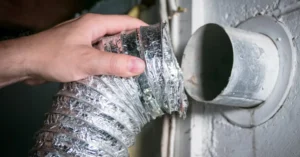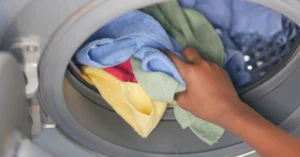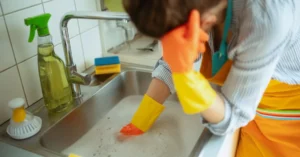Have you ever turned on your shower and felt like you’re standing under a dripping faucet instead of a real shower? That’s low water pressure, and it can be super annoying. Low water pressure makes simple tasks like washing dishes, taking showers, or filling up a pot take way longer than they should. The good news? Most causes of low water pressure are fixable. Let’s look at what might be causing your problem and how you can get your water flowing strong again.
What Is Low Water Pressure?
Low water pressure means the water coming out of your faucets, showerheads, or other fixtures doesn’t flow as fast or as strong as it should. Instead of a powerful stream, you get a weak trickle. Normal water pressure in a home should be between 40 and 60 PSI (pounds per square inch). When it drops below that, you’ll notice the difference right away.
You might have low water pressure in just one fixture, like your bathroom sink. Or it might affect your whole house. The location of the problem gives you a clue about what’s causing it. If only one faucet has weak flow, the issue is probably right there at that fixture. But if your whole house has low water pressure, the problem is likely in your main plumbing system.
8 Common Causes of Low Water Pressure
Understanding what causes low water pressure helps you figure out how to fix it. Here are the eight most common reasons why your water pressure might be weak.
1. Clogged Pipes
Over time, stuff builds up inside your pipes. This could be mineral deposits from hard water, rust, or other debris. When these materials stick to the inside of your pipes, they make the space water can flow through smaller. Think of it like a straw that’s partially blocked. The water has a harder time getting through, which reduces your water pressure.
This problem usually gets worse over time. You might not notice it at first, but eventually, the buildup gets bad enough that your water pressure drops significantly. Ignoring slow drains can make this problem even worse.
2. Faulty Pressure Regulator
Your home has a device called a pressure regulator. Its job is to control how much pressure the water has when it enters your house. If this regulator breaks or gets set wrong, it can cause low water pressure throughout your entire home.
The pressure regulator usually sits where your main water line enters your house. When it stops working right, it might reduce the pressure too much. Or it might let too much pressure through, which can damage your pipes. Either way, you need to get it checked and fixed by a professional plumber.
3. Closed Valves
This one sounds simple, but it happens more often than you’d think. Your home has two main shut-off valves. One is at the water meter (usually outside), and one is where the main line enters your house. If either of these valves isn’t opened all the way, you’ll have low water pressure.
Maybe someone partially closed a valve during a repair and forgot to open it completely. Or maybe the valve got bumped and moved. Check these valves first when you notice low water pressure. It’s an easy fix that takes just a few seconds.
4. Water Leaks
Leaks are sneaky. Sometimes you can see them, but often they’re hidden inside walls, under floors, or underground. When water leaks out of your pipes before it reaches your faucets, you’ll have less pressure at your fixtures. The water is escaping somewhere else instead of coming out where you want it.
Look for signs of water damage like wet spots on walls or ceilings, mold, or puddles. Your water bill might also go up if you have a leak. Finding and fixing water leaks quickly is important because they can cause serious damage to your home.
5. Corroded Plumbing
Older pipes, especially ones made of galvanized steel or iron, can rust and corrode over time. This corrosion eats away at the inside of the pipes, creating rough surfaces and narrowing the space water can flow through. The result? Low water pressure.
If your home is more than 50 years old and still has the original plumbing, corroded pipes might be your problem. Unfortunately, you can’t fix corroded pipes. You need to replace them. Modern pipes made of copper or PEX don’t have this problem, which is why pipelining and repiping services are so popular.
6. Shared Pipelines
Do you live in an apartment or condo? Your building might share water pipes with other units. When everyone uses water at the same time (like in the morning when people are getting ready for work), the demand increases. This can cause temporary low water pressure in your home.
This issue usually happens during peak times and goes away when fewer people are using water. While it’s annoying, it’s not usually something you can fix yourself. The building might need to upgrade its plumbing system to handle the demand better.
7. Mineral Buildup
Hard water contains minerals like calcium and magnesium. These minerals can build up on your faucet aerators, showerheads, and inside your pipes. You might notice white or greenish crusty stuff on your fixtures. This buildup restricts water flow and causes low water pressure.
The good news is that you can often clean this buildup from individual fixtures. For bigger problems inside your pipes, you might need professional drain cleaning services. Installing a water treatment system can also prevent future mineral buildup.
8. Municipal Water Supply Issues
Sometimes the problem isn’t in your home at all. Your city’s water supply might have issues. Maybe they’re doing maintenance on the water lines. Or maybe there’s a problem at the water treatment plant. Natural disasters like droughts can also affect water pressure.
Call your water company to ask if they’re aware of any issues in your area. If the problem is on their end, there’s not much you can do except wait for them to fix it. Usually, these problems are temporary and get resolved pretty quickly.
How to Fix Low Water Pressure at Home
Now that you know what causes low water pressure, let’s talk about solutions. Some fixes are simple enough to do yourself, while others need a professional plumber.
Start by checking your main water valves. Make sure both the valve at your water meter and the one at your main line are fully open. Turn them counterclockwise until they won’t turn anymore. This takes just a minute and might solve your problem immediately.
Next, clean your faucet aerators and showerheads. Unscrew them and soak them in white vinegar for a few hours. This dissolves mineral buildup. Rinse them off and screw them back on. You’ll be amazed at how much this can improve water pressure.
Check for visible leaks around your home. Look under sinks, around toilets, and in your basement or crawl space. If you find a leak, turn off the water to that fixture and call a plumber. Even small leaks can cause low water pressure and waste a lot of water.
Test your water pressure with a gauge. You can buy one at a hardware store for about $10. Attach it to an outdoor faucet and turn the water on full blast. If the reading is below 40 PSI, you have low water pressure. If it’s above 80 PSI, your pressure is too high, which can damage your plumbing.
For more serious issues like corroded pipes, a faulty pressure regulator, or clogs deep in your plumbing system, you need professional help. These problems require special tools and expertise to fix properly. Professional plumbing repair ensures the job gets done right the first time.
When to Call a Professional for Low Water Pressure
Some low water pressure problems are DIY-friendly. Others? Not so much. Here’s when you should call a professional plumber instead of trying to fix it yourself.
Call a plumber if the low water pressure affects your whole house. This usually means the problem is in your main water line or pressure regulator. These are complex systems that need professional attention. A licensed plumber has the right tools to diagnose and fix the problem safely.
If you suspect corroded pipes, don’t wait. Corroded plumbing can lead to serious leaks and water damage. A plumber can inspect your pipes using a camera line inspection to see exactly what’s going on inside them. Then they can recommend whether you need repairs or a complete replacement.
Hidden leaks are another reason to call a pro. If you hear water running when all faucets are off, or if your water bill suddenly goes up for no reason, you might have a hidden leak. Plumbers use special equipment to find leaks behind walls and under floors without tearing your house apart.
When your pressure regulator needs replacing, hire a professional. This job requires special knowledge and tools. A plumber will install a new regulator and set it to the correct pressure for your home. They’ll also check that everything is working properly and make sure your plumbing system is safe.
Remember, trying to fix complex plumbing problems yourself can make things worse. You might end up with bigger repairs and higher costs. Professional plumbers are trained, licensed, and insured. They know how to fix problems correctly and safely. Plus, their work usually comes with a guarantee.
Regular maintenance can prevent many low water pressure problems. Consider signing up for a maintenance plan like The Solid Care Plan. For just $144 per year, you get regular inspections and preventative care that can catch problems before they become major headaches. This kind of year-round plumbing maintenance saves you money and stress in the long run.
Protect Your Home from Low Water Pressure
Low water pressure is frustrating, but now you know what causes it and how to fix it. Start with the simple checks: open your valves fully, clean your aerators, and look for obvious leaks. These easy steps solve a lot of low water pressure problems.
For bigger issues like corroded pipes, faulty regulators, or hidden leaks, don’t hesitate to call a professional. The experts at Solid Plumbing & Drains have seen it all. They’ll quickly diagnose your low water pressure problem and provide lasting solutions. Their team serves San Diego County with honest, transparent service that you can trust.
Don’t let low water pressure slow down your daily routine. Whether you need emergency plumbing help or want to schedule a regular inspection, Solid Plumbing & Drains is ready to help. Contact us today at 858-331-1258 for fast, reliable service. Get your water pressure back to normal and enjoy strong, consistent water flow throughout your home.




